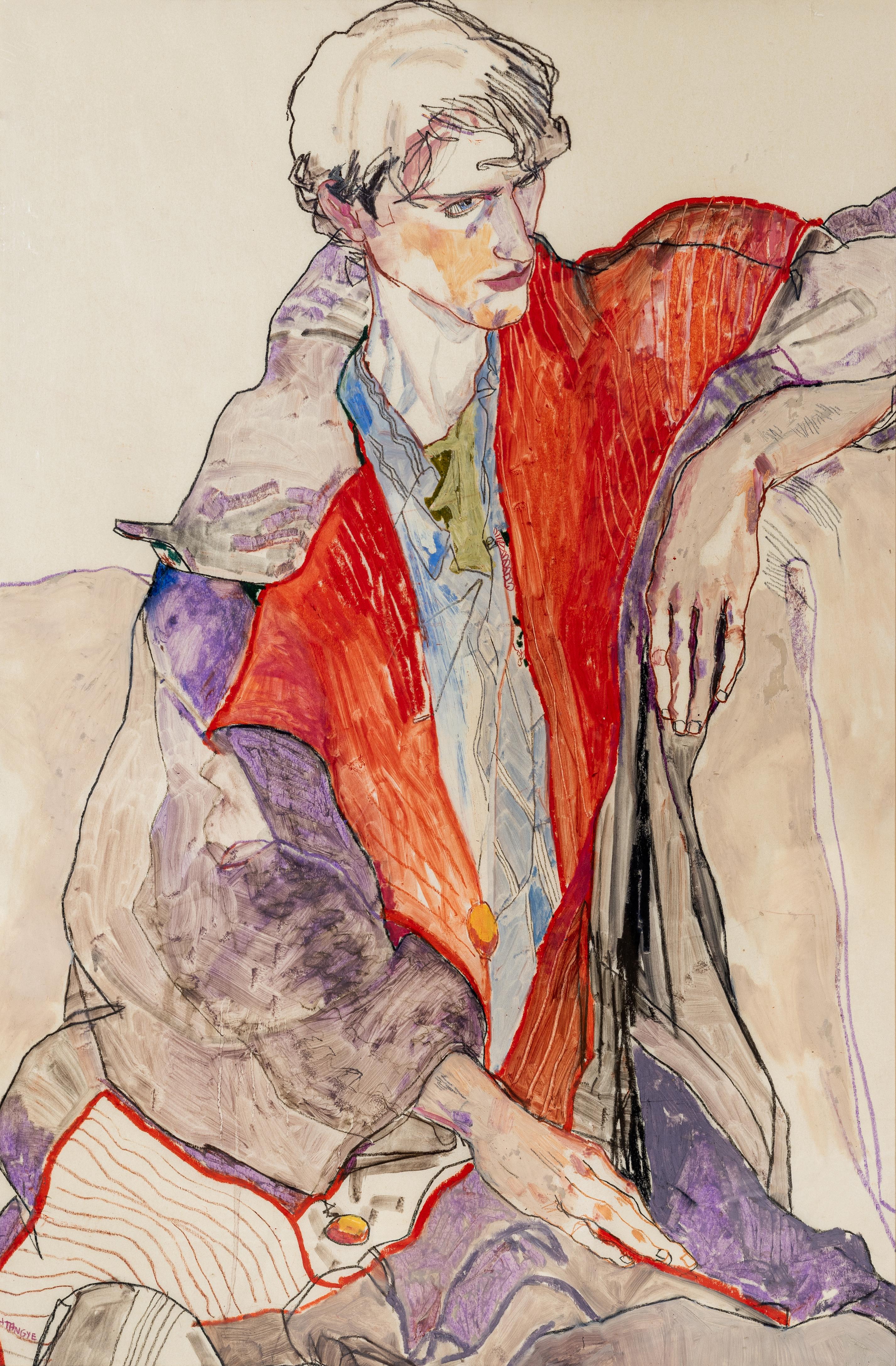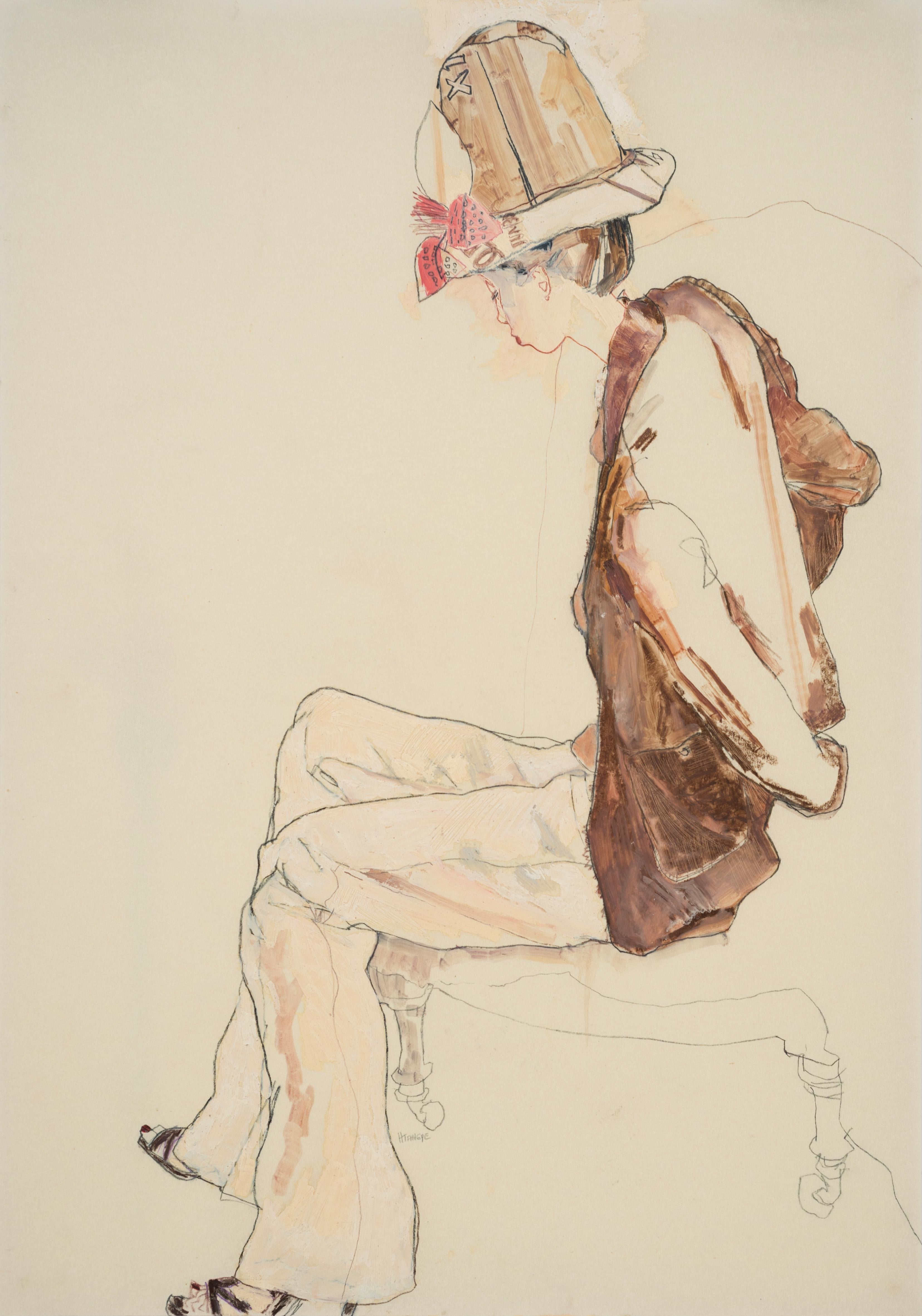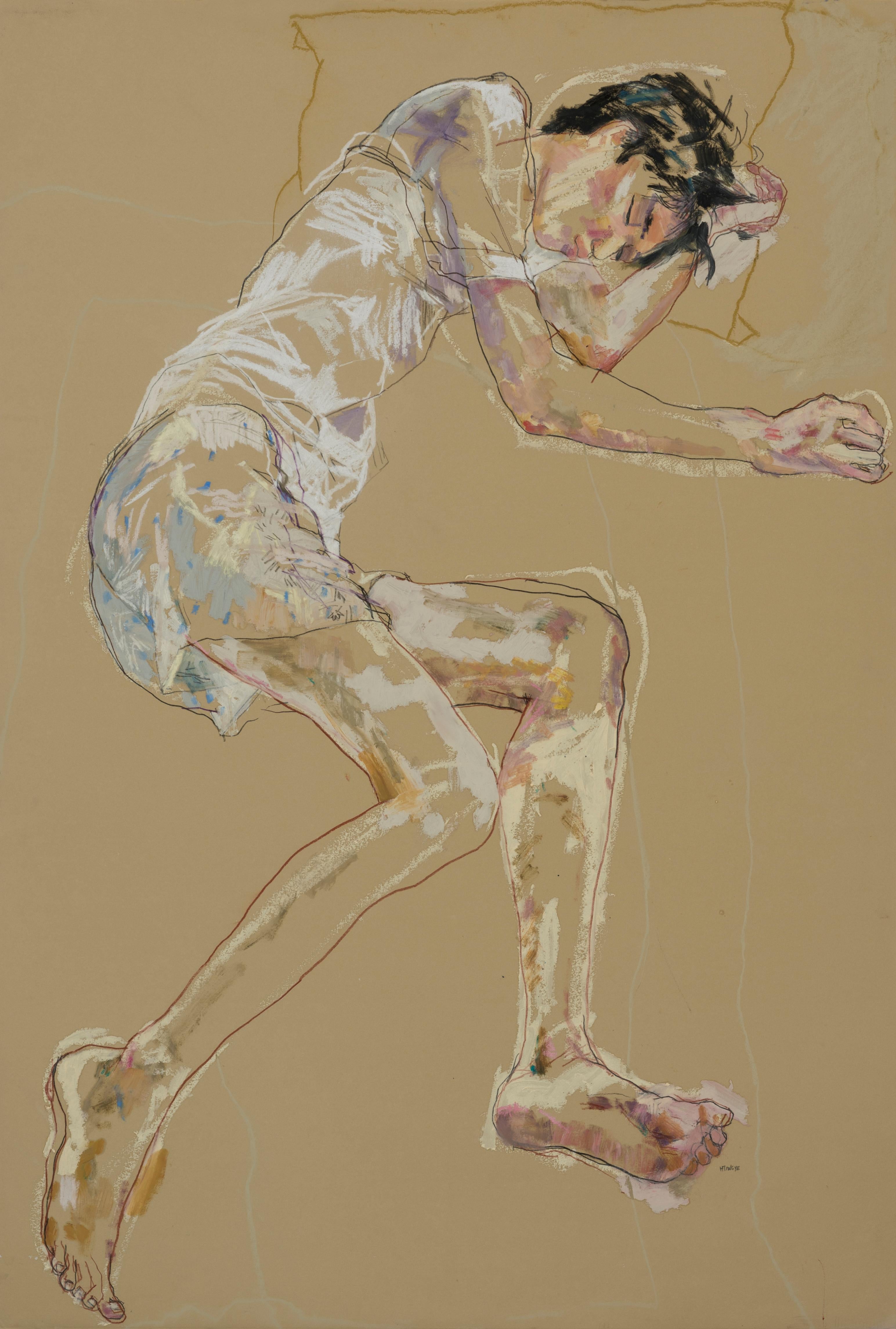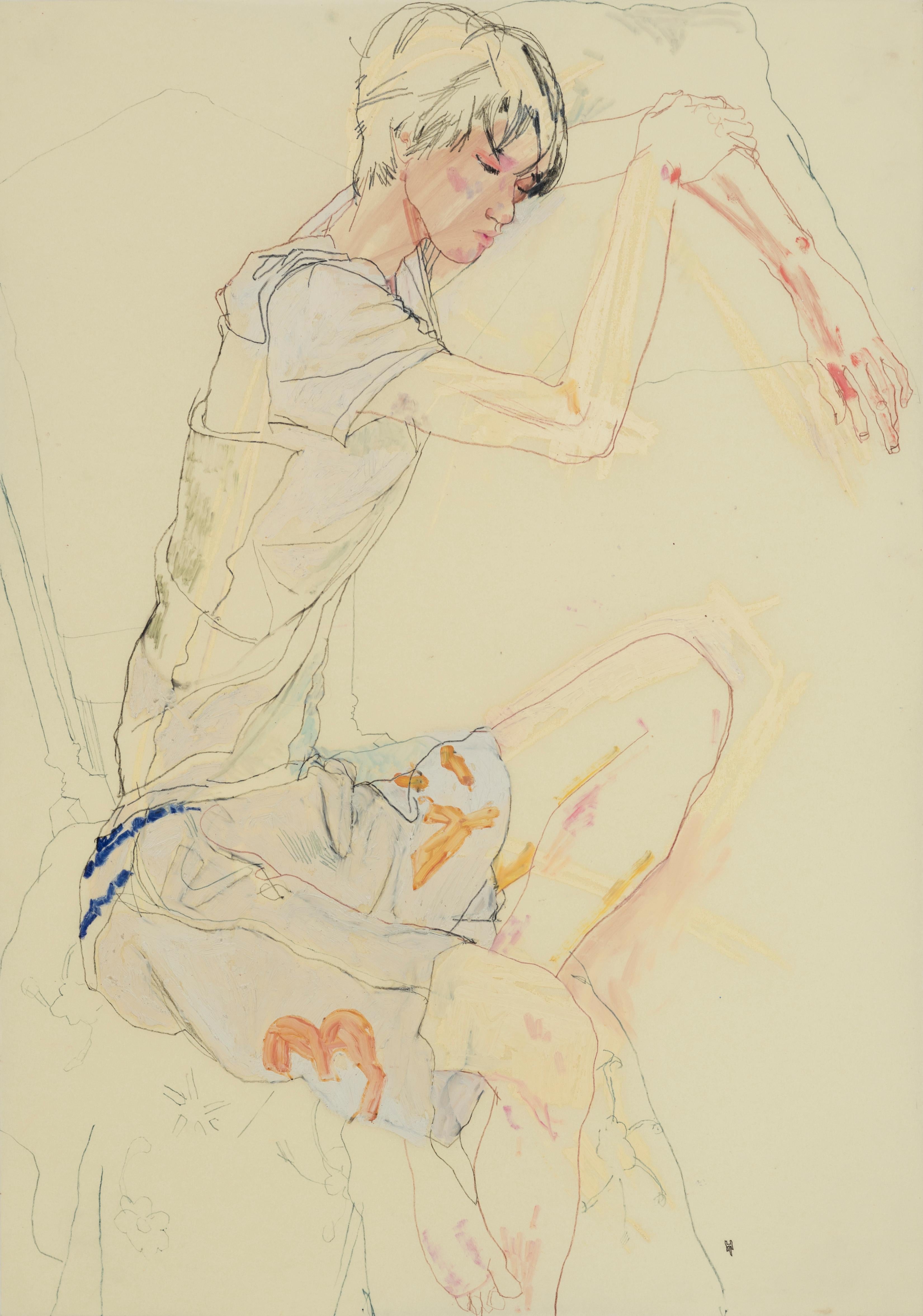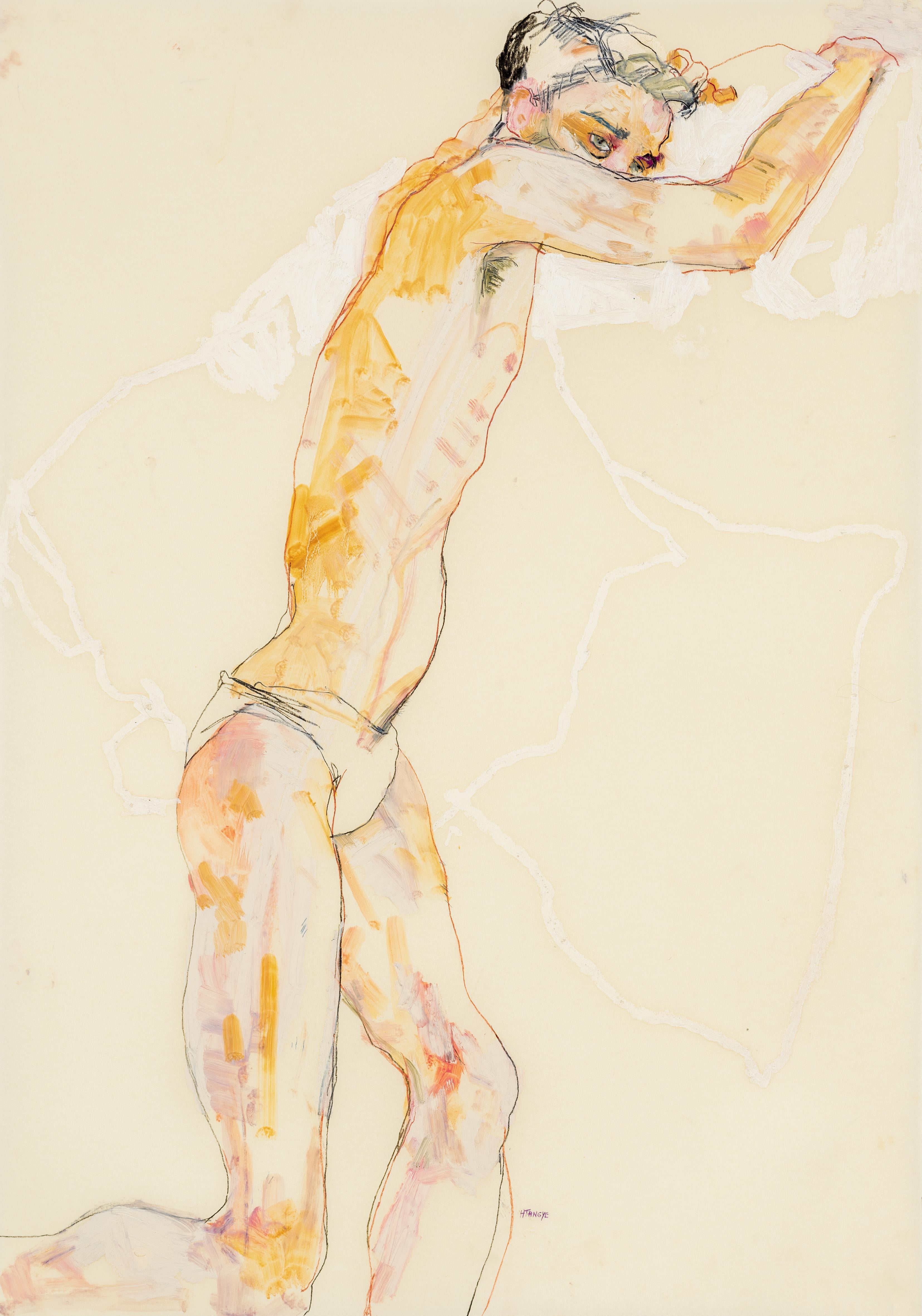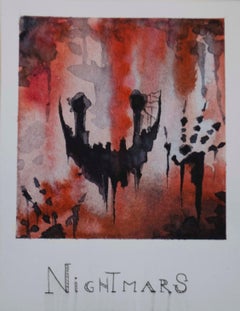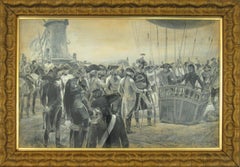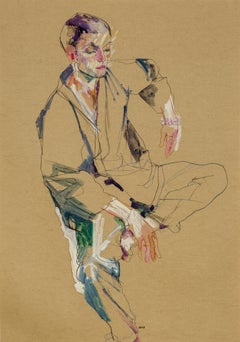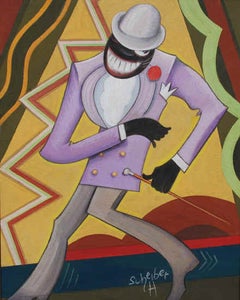
Jazz Dancer
View Similar Items
Want more images or videos?
Request additional images or videos from the seller
1 of 5
Hugó ScheiberJazz Dancerc.1925
c.1925
About the Item
- Creator:Hugó Scheiber (1873-1950, Hungarian)
- Creation Year:c.1925
- Dimensions:Height: 19.25 in (48.9 cm)Width: 15.25 in (38.74 cm)
- Medium:
- Period:
- Condition:Excellent.
- Gallery Location:West Hollywood, CA
- Reference Number:1stDibs: G140324130451
About the Seller
5.0
Vetted Seller
These experienced sellers undergo a comprehensive evaluation by our team of in-house experts.
Established in 1992
1stDibs seller since 2012
27 sales on 1stDibs
Typical response time: 13 hours
More From This SellerView All
- The SurveyorBy Ron BlumbergLocated in West Hollywood, CARon Blumberg was classically trained at La Grande Academie Chaumiere in Paris, 1932, before moving to New York where he became a National Academy artist and a member of the Art Stude...Category
1930s Figurative Paintings
MaterialsGouache, Paper
Price Upon Request - ShadowsBy Béla Kádár, 1877-1955Located in West Hollywood, CAPresenting an original mixed media watercolor by Hungarian artist Bela Kadar. Bela Kadar was a historically important artist, is work was included as part of the degenerate art movement of Nazi Germany. His works appeared illustrated in the famous German arts magazine Der Sturm...Category
1920s Expressionist Figurative Paintings
MaterialsGouache
Price Upon Request - NightmarsBy Jade BocquillonLocated in West Hollywood, CAWe are premiering the paintings of a just discovered French artist Jade Bocquillon. A gifted artist living in Provence in the South of France, The work of Jade Bocquillon evokes dee...Category
2010s Contemporary Figurative Paintings
MaterialsWatercolor
Price Upon Request - LilliesBy Robert McIntoshLocated in West Hollywood, CAPresenting a magnificent early watercolor by American artist Robert McIntosh(1916-2010.) Lillies, is an original watercolor on paper, signed, painted in 1936, currently unframed with an image dimension of 10.5 x 15 inches, excellent original condition, acquired directly from the personal collection of the artist. Please contact our West Hollywood gallery...Category
1930s Realist Figurative Paintings
MaterialsWatercolor
Price Upon Request - I Miss YouBy Jade BocquillonLocated in West Hollywood, CAWe are premiering the paintings of a just discovered French artist Jade Bocquillon. A gifted artist living in Provence in the South of France, The work of Jade Bocquillon evokes deep feeling and emotion, combined with the artist's natural detailed style of painting. These paintings have just arrived from the personal collection of the artist, this will be the first time they have been available for sale. I MIss You...Category
2010s Contemporary Figurative Paintings
MaterialsWatercolor
Price Upon Request - The AccordionistBy Byron RandallLocated in West Hollywood, CAAn exceptional original watercolor by American artist Byron Randall. "The Accordionist", is an original watercolor on heavy paper, signed, c.1945, with an image dimension of 30.5 ...Category
1940s Expressionist Figurative Paintings
MaterialsWatercolor
Price Upon Request
You May Also Like
- The Abduction of the Sabine Women , a Renaissance drawing by Biagio PupiniLocated in PARIS, FRThis vigorous drawing has long been attributed to Polidoro da Caravaggio: The Abduction of the Sabine Women is one of the scenes that Polidoro depicted between 1525 and 1527 on the façade of the Milesi Palazzo in Rome. However, the proximity to another drawing inspired by this same façade, kept at the Ecole des Beaux-Arts, and to other drawings inspired by Polidoro kept at the Musée du Louvre, leads us to propose an attribution to Biagio Pupini, a Bolognese artist whose life remains barely known, despite the abundant number of drawings attributed to him. 1. Biagio Pupini, a Bolognese artist in the light of the Roman Renaissance The early life of Biagio Pupini, an important figure of the first half of the Cinquecento in Bologna - Vasari mentions him several times - is still poorly known. Neither his date of birth (probably around 1490-1495) nor his training are known. He is said to have been a pupil of Francesco Francia (1450 - 1517) and his name appears for the first time in 1511 in a contract with the painter Bagnacavallo (c. 1484 - 1542) for the frescoes of a church in Faenza. He then collaborated with Girolamo da Carpi, at San Michele in Bosco and at the villa of Belriguardo. He must have gone to Rome for the first time with Bagnacavallo between 1511 and 1519. There he discovered the art of Raphael, with whom he might have worked, and that of Polidoro da Caravaggio. This first visit, and those that followed, were the occasion for an intense study of ancient and modern art, as illustrated by his abundant graphic production. Polidoro da Caravaggio had a particular influence on the technique adopted by Pupini. Executed on coloured paper, his drawings generally combine pen, brown ink and wash with abundant highlights of white gouache, as in the drawing presented here. 2. The Abduction of the Sabine Women Our drawing is an adaptation of a fresco painted between 1525 and 1527 by Polidoro da Caravaggio on the façade of the Milesi Palace in Rome. These painted façades were very famous from the moment they were painted and inspired many artists during their stay in Rome. These frescoes are now very deteriorated and difficult to see, as the palace is in a rather narrow street. The episode of the abduction of the Sabine women (which appears in the centre of the photo above) is a historical theme that goes back to the origins of Rome and is recounted both by Titus Livius (Ab Urbe condita I,13), by Ovid (Fasti III, 199-228) and by Plutarch (II, Romulus 14-19). After killing his twin brother Romus, Romulus populates the city of Rome by opening it up to refugees and brigands and finds himself with an excess of men. Because of their reputation, none of the inhabitants of the neighbouring cities want to give them their daughters in marriage. The Romans then decide to invite their Sabine neighbours to a great feast during which they slaughter the Sabines and kidnap their daughters. The engraving made by Giovanni Battista Gallestruzzi (1618 - 1677) around 1656-1658 gives us a good understanding of the Polidoro fresco, allowing us to see how Biagio Pupini reworked the scene to extract this dynamic group. With a remarkable economy of means, Biagio Pupini takes over the left-hand side of the fresco and depicts in a very dense space two main groups, each consisting of a Roman and a Sabine, completed by a group of three soldiers in the background (which seems to differ quite significantly from Polidoro's composition). The balance of the drawing is based on a very strongly structured composition. The drawing is organised around a median vertical axis, which runs along both the elbow of the kidnapped Sabine on the left and the foot of her captor, and the two main diagonals, reinforced by four secondary diagonals. This diamond-shaped structure creates an extremely dynamic space, in which centripetal movements (the legs of the Sabine on the right, the arm of the soldier on the back at the top right) and centrifugal movements (the arm of the kidnapper on the left and the legs of the Sabine he is carrying away, the arm of the Sabine on the right) oppose each other, giving the drawing the appearance of a whirlpool around a central point of support situated slightly to the left of the navel of the kidnapper on the right. 3. Polidoro da Caravaggio, and the decorations of Roman palaces Polidoro da Caravaggio was a paradoxical artist who entered Raphael's (1483 - 1520) workshop at a very young age, when he oversaw the Lodges in the Vatican. Most of his Roman work, which was the peak of his career, has disappeared, as he specialised in facade painting, and yet these paintings, which are eminently visible in urban spaces, have influenced generations of artists who copied them abundantly during their visits to Rome. Polidoro Caldara was born in Caravaggio around 1495-1500 (the birthplace of Michelangelo Merisi, known as Caravaggio, who was born there in 1571), some forty kilometres east of Milan. According to Vasari, he arrived as a mason on the Vatican's construction site and joined Raphael's workshop around 1517 (at the age of eighteen according to Vasari). This integration would have allowed Polidoro to work not only on the frescoes of the Lodges, but also on some of the frescoes of the Chambers, as well as on the flat of Cardinal Bibiena in the Vatican. After Raphael's death in 1520, Polidoro worked first with Perin del Vaga before joining forces with Maturino of Florence (1490 - 1528), whom he had also known in Raphael's workshop. Together they specialised in the painting of palace façades. They were to produce some forty façades decorated with grisaille paintings imitating antique bas-reliefs. The Sack of Rome in 1527, during which his friend Maturino was killed, led Polidoro to flee first to Naples (where he had already stayed in 1523), then to Messina. It was while he was preparing his return to the peninsula that he was murdered by one of his assistants, Tonno Calabrese, in 1543. In his Vite, Vasari celebrated Polidoro as the greatest façade decorator of his time, noting that "there is no flat, palace, garden or villa in Rome that does not contain a work by Polidoro". Polidoro's facade decorations, most of which have disappeared as they were displayed in the open air, constitute the most important lost chapter of Roman art of the Cinquecento. The few surviving drawings of the painter can, however, give an idea of the original appearance of his murals and show that he was an artist of remarkable and highly original genius. 4. The façade of the Milesi Palace Giovanni Antonio Milesi, who commissioned this palace, located not far from the Tiber, north of Piazza Navona, was a native of the Bergamo area, like Polidoro, with whom he maintained close friendly ties. Executed in the last years before the Sack of Rome, around 1526-1527, the decoration of Palazzo Milesi is considered Polidoro's greatest decorative success. An engraving by Ernesto Maccari made at the end of the nineteenth century allows us to understand the general balance of this façade, which was still well preserved at the time. The frescoes were not entirely monochrome, but alternated elements in chiaroscuro simulating marble bas-reliefs and those in ochre simulating bronze and gold vases...Category
16th Century Old Masters Figurative Drawings and Watercolors
MaterialsInk, Gouache, Pen
- Richard Caton Woodville II (1856 - 1927) 1794 War Balloon Aquarell England 1910By Richard Caton Woodville Jr.Located in Meinisberg, CHRichard Caton Woodville II (British, 1856 - 1927) The French Aerostatic Corps - The first War Balloon The launching of the L'Entreprenant used by the French Army under General Jourd...Category
1910s English School Figurative Drawings and Watercolors
MaterialsPaper, Watercolor, Gouache, Cardboard
- Oleg (Kimono), Mixed media on ochre parchment paperBy Howard TangyeLocated in London, GBHoward Tangye (b.1948, Australia) has been an influential force in fashion for decades. Lecturing at London’s Central Saint Martins for 35 years, including 16 years as head of BA Wom...Category
2010s Contemporary Figurative Drawings and Watercolors
MaterialsPaint, Paper, Parchment Paper, Charcoal, Crayon, Oil Crayon, Oil Pastel,...
- Jake II (Red coat), Mixed media on Pergameneta parchmentBy Howard TangyeLocated in London, GBHoward Tangye (b.1948, Australia) has been an influential force in fashion for decades. Lecturing at London’s Central Saint Martins for 35 years, including 16 years as head of BA Wom...Category
2010s Contemporary Figurative Paintings
MaterialsPaint, Paper, Parchment Paper, Charcoal, Crayon, Oil Crayon, Oil Pastel,...
- Tom Cawson (Sitting - Hand on Head), Mixed media on grey cardboardBy Howard TangyeLocated in London, GBHoward Tangye (b.1948, Australia) has been an influential force in fashion for decades. Lecturing at London’s Central Saint Martins for 35 years, including 16 years as head of BA Wom...Category
21st Century and Contemporary Contemporary Figurative Paintings
MaterialsOther Medium, Paint, Graphite, Color Pencil, Carbon Pencil, Pencil, Pen,...
- Maria Nishio (Profile - Browns), Mixed media on Pergamenata parchmentBy Howard TangyeLocated in London, GBHoward Tangye (b.1948, Australia) has been an influential force in fashion for decades. Lecturing at London’s Central Saint Martins for 35 years, including 16 years as head of BA Wom...Category
2010s Contemporary Figurative Drawings and Watercolors
MaterialsOther Medium, Paint, Paper, Parchment Paper, Chalk, Charcoal, Crayon, Oi...



